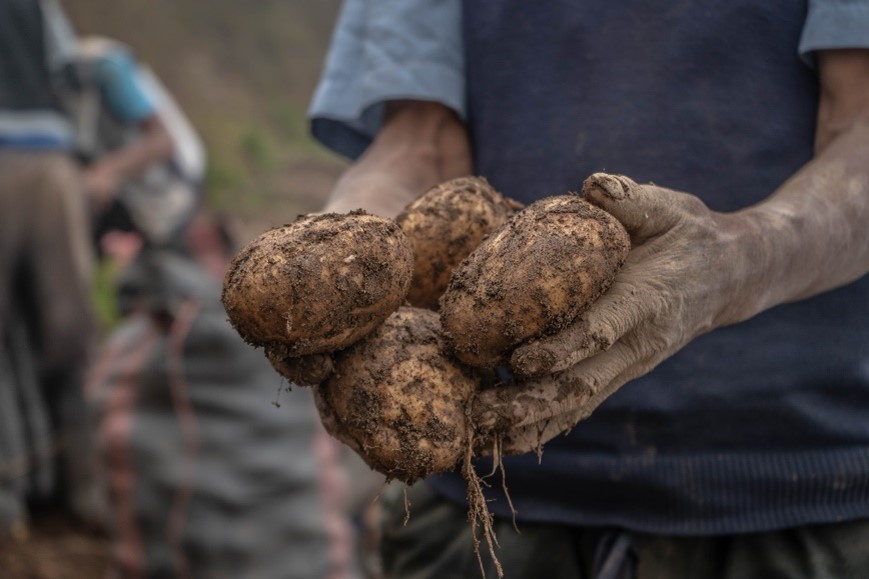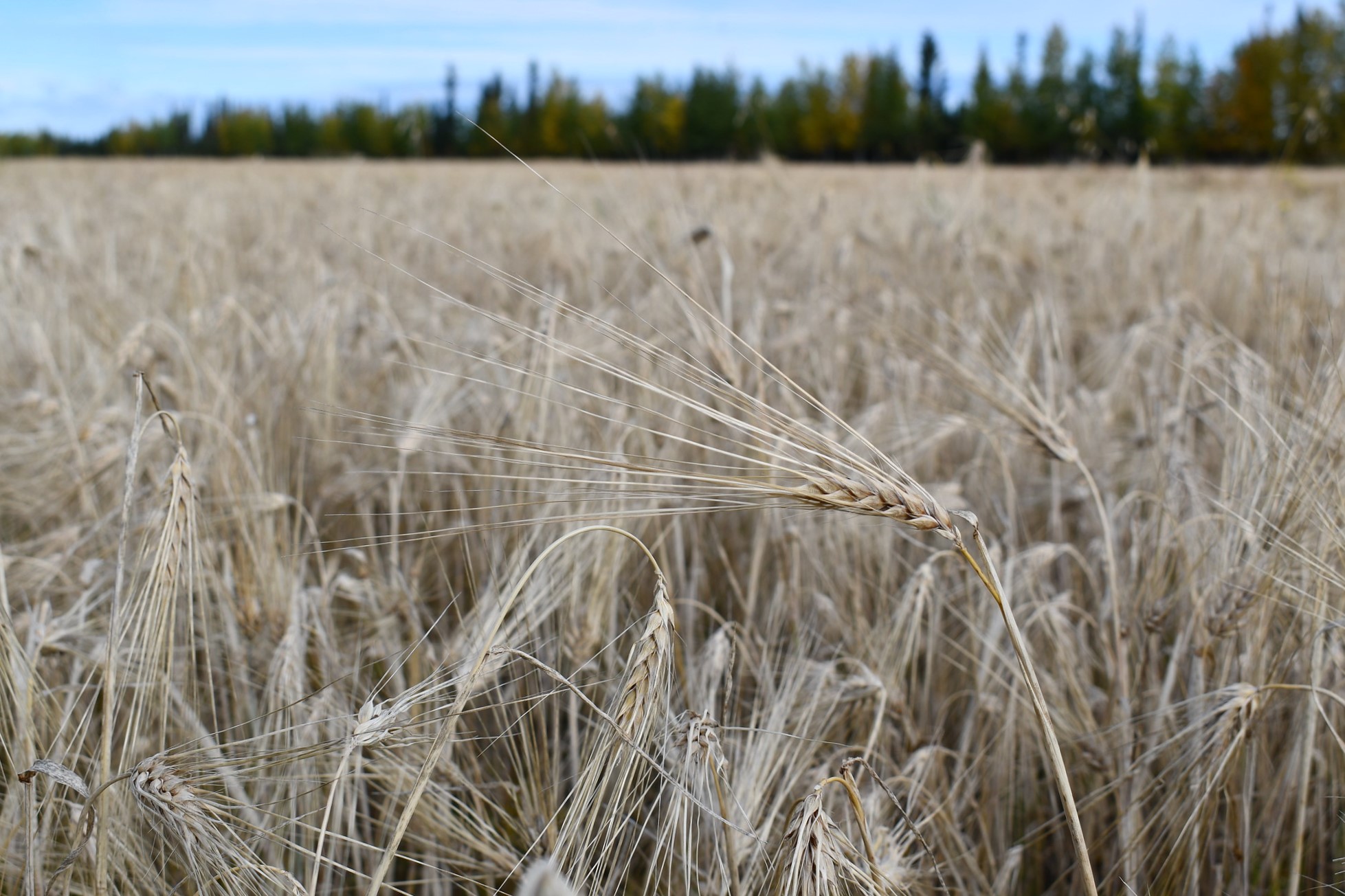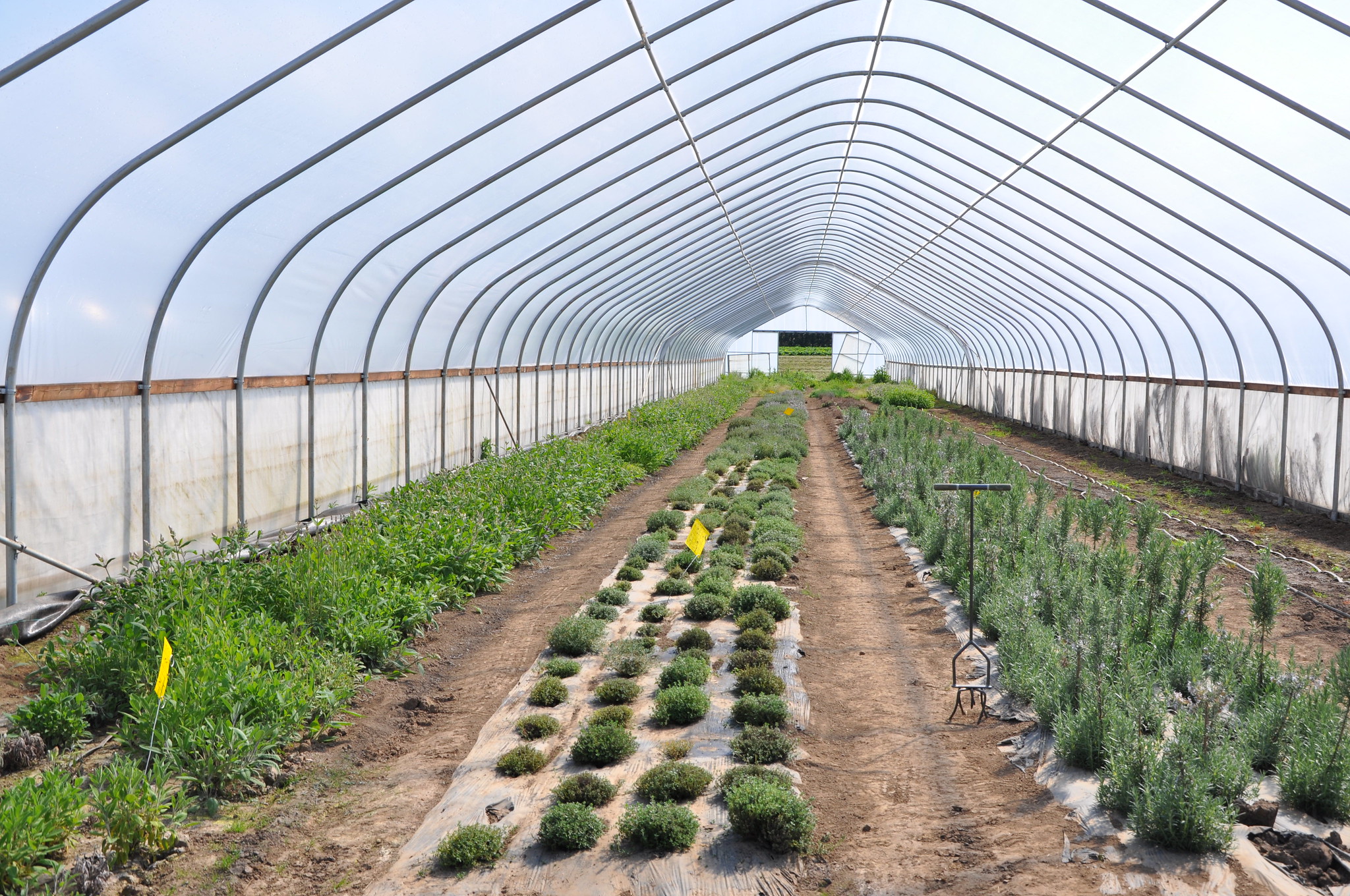Estimated reading time: 6 minutes
Agriculture is an important industry in the Northwest. From vineyards, to orchards, to dryland and irrigated farms, the Northwest is one of the most productive agricultural regions in the country and hosts nearly 40 million acres of farmland. Agriculture represents 8.3% of total sales and 7.5% of all jobs in the Northwest, and accounted for nearly $7 billion in sales in 2021. In addition, roughly 36,000 small farms (farms with an income of less than $250,000 annually) dot the landscape. The Northwest is also the top producer of 28 agricultural products: Washington is the leading producer of apples, Oregon produces 17% of the country’s cherries, and Idaho produces nearly 1/3 of U.S. potatoes every year. Agriculture in Alaska is a small industry, accounting for less than 3% of the state’s economy. Though the state does not produce a high volume of food, there is potential for the agricultural industry to expand, particularly with lengthening growing seasons associated with climate change. Currently, peonies, hay, barley, potatoes, carrots, and kale are some of the most significant crops grown in Alaska.
Impacts of Climate Change on Agricultural Production in the Northwest

Climate change impacts agriculture, and as such, can have effects on the broader economy. For example, climate change can affect crop yield, which can mean less revenue for farms and less food for people. Hotter, drier conditions across the Northwest can reduce soil moisture and increase heat stress in crops. This can result in crop loss, such as losses that occurred during the 2021 Northwest Heat Dome. Increased temperatures can also lead to issues like crop sunburn from extreme heat, which can reduce annual yields for farms by as much as 40%. Though increases in temperature may lengthen growing seasons for farmers, changes to precipitation patterns could lead to water scarcity during peak growing months. These changes could disrupt the timeline of water availability and growing patterns for many crops in the Northwest, resulting in a potential loss of yield.
As the impacts of climate change continue to intensify, extreme weather events such as extreme heat, heavy precipitation, and drought are likely to become more frequent and impactful in the Northwest. Extreme weather is the most prominent cause of crop loss, leading to 85% of reported losses and 80% of indemnity payments for failed crops. The 2015 drought, for example, led to damages that cost farmers in Washington an estimated $633 to $733 million dollars, though this is a conservative estimate. Some farmers can recoup partial losses through insurance payments. However, for many, reported losses are not high enough for these payments, and others are not able to purchase insurance. Even with some losses regained, farms affected by extreme weather face financial challenges. Increasing trends in crop insurance payments indicate that disruption in agricultural production is related to the region’s rising temperatures and declining snowpack.
Changing weather patterns pose unique challenges as well as opportunities for Alaska. Increases in temperature and frost-free days could allow for longer growing seasons in the future. Farmers may be able to grow new and different crops, as well as increase the number of crops harvested each year. This could translate into a more expansive local food system, with the potential to increase food security and strengthen the economy in the state. These same changes in weather, however, can also negatively impact the Alaskan agricultural economy. If climate change affects crop yields in other states, the amount of food imported to Alaska could decrease and the cost of food could rise, which could lead to greater food insecurity. In addition, warming temperatures and thawing permafrost could damage infrastructure (e.g., road caving), which could slow the delivery of crucial food shipments.
Agricultural Adaptation and Economic Resilience
The Northwest is a major contributor to agricultural production in the U.S., providing over $20 billion in agricultural and food production exports each year. Climate projections for 2050 suggest that food needs will increase by 35-56% nationally. Based on these expected increases, Northwest farmers will likely benefit from adopting practices that can help to meet future crop demands. Climate-informed adaptation and mitigation practices, such as intercropping, evaporative cooling stations, and cover crops, can help to create more climate-resilient crops, soil, and farms.

Extreme heat can have significant impacts on agricultural production in the Northwest, but there are adaptation actions that can help farmers prevent and recover from related economic losses. For example, small tree and fruit farms in Idaho, Oregon, and Washington have to be proactive about protecting crops from extreme heat and sun damage; not only can heat cause crop failure, but sun damage can also create unmarketable fruit. One way to do this is by using mesh coverings and evaporative cooling stations (also known as overhead micro-sprinklers). During intense heat, mesh coverings can offer shade to crops and cooling stations can provide necessary moisture to crops. These systems have helped some apple and cherry farmers experience 20-30% less damage in crops, increasing revenue for farms. During the 2021 heat dome, many farmers experienced 50% to 100% crop losses, but cooling systems can help to reduce these percentages.
Alongside extreme heat, drought can severely affect irrigation water availability. During the 2015 drought in the Northwest, many farmers experienced regional cutbacks in water supply which led to a decline in production and profits. Some farmers have transitioned to a practice called dry farming, in which they rely upon only the moisture present in the ground to help crops thrive. Crop yields might not be as high as irrigated crops, but this practice can keep some crops growing year-round, depending on regional climate variabilities.
The effects of extreme drought and heat are also impacting soil in the Northwest. Farming can leave barren soil vulnerable after a harvest. In some cases, heavy flooding has caused increased instances of soil erosion, leading to a loss of nutrients needed for crops. There are adaptation practices that can help farmers improve their soil health, including no-till farming and cover cropping. Cover crops can reduce soil erosion, increase soil organic matter, and in some cases, increase farm profits. For example, incorporating barley as a cover crop can help soil nutrient cycling, prevent erosion, and offer weed control. In addition, when intercropped (mixed into an area with another crop), barley can improve the quality and productivity of crops and soil, which could help farmers increase profits. No-till farming can also improve soil health. For example, on a barley farm in Alaska, no-till farming helped farmers to improve soil moisture, reduce labor costs, and reduce irrigation demands.
Another strategy to adapt to rising temperatures in the Northwest is the incorporation of high tunnels to create controlled climates for vegetables and specialty crops. High tunnels use plastic coverings that are placed along the hoop structure to create shade cover for crops. For small acreage farms, they can be a cost-effective way to adapt to extreme heat and excessive sunlight for sensitive crops. For vegetables that grow well in high tunnels, profits can be increased threefold compared to the same vegetables grown in open fields. However, seasonal high tunnels are not ideal for all vegetables. For example, lettuce grown in a high tunnel can be more expensive to produce and yield lower numbers than lettuce grown outside.
Farm Labor Challenges

Labor costs for farms have been rising in recent years due to increasingly challenging working conditions. Farm workers face challenges that range from reduced air quality to extreme heat. Farm workers may also lack access to adequate health insurance or proper protective clothing. Climate change intensifies these challenging conditions. To meet these challenges, farm workers require higher wages. In addition, there are fewer workers available for farm labor. One study demonstrated that labor shortages caused $3.1 billion in lost crop production revenue and an additional $2.8 billion for impacts to other related industries (e.g., transportation, manufacturing, irrigation) nationally.
To address these challenges and improve the economic success of farms, farmers can incorporate improved quality of labor practices, such as incentive programs, compliance and enforcement of occupational safety and health act (OSHA), and quality control. In the Northwest, programs like Protecting Oregon Farmworkers (POF) help to provide assistance and adequate access to safety and basic needs to farm workers and their families. Programs such as this work to give farm workers a voice and ensure their safety.
Resources for Farmers
With partial funding from the Inflation Reduction Act, the USDA is working to positively impact many small farms across the nation by providing a number of grants, loans, and loan-relief options. The USDA also provides a variety of helpful resources for farmers to find loan programs, get assistance with taxes, and explore options for conservation-related issues. Farmers can use the online loan assistance tool to create a profile and stay informed on relevant information and programs, as well as assess what tools, practices, and loans they will need to continue to thrive. The Natural Resources Conservation Service (NRCS) provides assistance via the Environmental Quality Incentives Program (EQIP) to ensure farmers have the means to maintain conservation practices on their land.
Climate change is impacting crop production throughout the Northwest. These impacts could affect the stability and strength of the Northwest economy. As such, farmers that can implement agricultural adaptation practices like no-till farming or cover crops may have more success adapting to extreme heat and drought, among other climatic impacts. Programs and resources provided by the USDA can provide the assistance needed for many farmers to begin transitioning to adaptation and climate-mitigation practices. Climate change is expected to continue to impact the economy in the Northwest, but proactive management can strengthen climate resilience in the agricultural sector.




